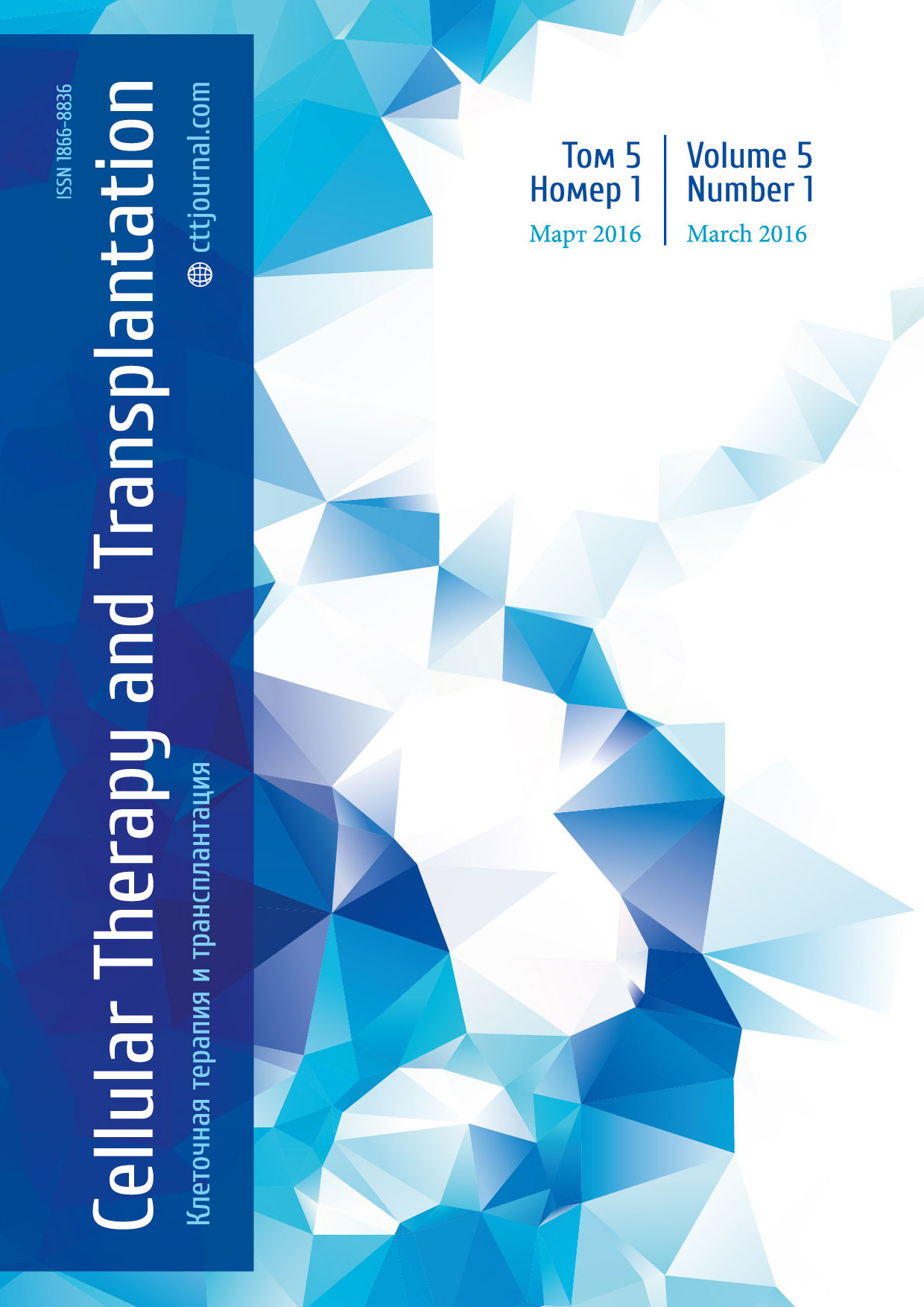Effectiveness of high-dose chemotherapy with autologous stem cell transplantation (ASCT) in patients with relapsed and refractory course of Hodgkin’s lymphoma
Elena V. Kondakova, Natalya B. Mikhailova, Evgenia S. Borsenkova, Olga B. Kalashnikova, Nadezhda V. Medvedeva, V. V. Ryabchikova, Boris V. Afanasyev
First Pavlov State Medical University of Saint Petersburg, Raisa Gorbacheva Memorial Research Institute for Pediatric Oncology, Hematology and Transplantation, St. Petersburg, Russia
Summary
Introduction
Over last decades, the high-dose chemotherapy (HDCT) followed by autologous stem cell transplantation (ASCT) has become a leading approach to treatment of patients with relapsed and refractory Hodgkin lymphoma.
Materials and Methods
We have retrospectively analyzed a cohort of patients with Hodgkin’s lymphoma who received HDCT with autologous stem cell transplant (ASCT) over the period from September 1990 to August 2015. Treatment was performed at two clinics (SPbState Medical University, 173 patients, and 31st City Hospital, 39 patients). The study included 212 patients with relapsed and refractory Hodgkin’s lymphoma (LH). The observation period was from 6 months to 22 years, a median of 4,5 years. Average age of the patients was 26,3 years, ranging from 5 to 56 years. The study included 111 males (52,3%) and 101 female patients (47,6%).
Results
The diagnosis of Hodgkin’s lymphoma in all patients was confirmed by morphological and immunological studies. The predominant histological variant was nodular sclerosis (79%), mixed-cell variant (16%), and lymphoid depletion or lymphoid prevalence (4% and 1%, respectively), according to the WHO 2001-08 Classification. The majority of patients were at clinical stage IV (n=108), and stage III (n=45), a total of 153 (72,1%) at the time of the disease staging, according to the Ann Arbor 1971. B symptoms were registered in 168 patients (79,2%). Extranodal involvement (lung, bone marrow, bone, liver lesions) were found in 144 patients (67,9%). Early relapse was revealed in 72 (33,9%) of cases; primary-resistance was assessed for 38 patients (17,9%). 102 (48,1%) patients with permanently relapsing course. The number of initial chemotherapy courses ranged from 6 to 22 (a mean of 14 rounds). The number of the chemotherapy lines varied from 1 to 8 (3, at an average). Radiation therapy was performed for 115 patients (54,2%), with total cumulated dose ranging between 20 and 40 Gy. The average time period from diagnosis to auto-HSCT was 29 months (6 to 49 months). Following chemotherapy, a complete remission (CR) was achieved in 54 patients (25,4%), partial remission (PR), in 55 (25,9%). 38 patients (17,9%) had a stable disease (SD), whereas progression of the disease was diagnosed in 65 patients (30,6%). BEAM conditioning regimen was conducted for 101 patients (47,6%), CBV protocol, in 45 cases (21,2%). Since 2005, some other conditioning regimes were performed, e. g., R-BEAM (with Rituximab) was administred to 3 patients (1,4%). Since 2011, BeEAM with bendamustine was used for 48 patients (22,6%). 15 patients received other treatment regimens. Efficiency evaluation of treatment before autologous stem cell transplants (ASCT) was determined by the following criteria: complete remission (CR), partial remission (PR), stabilization (SD) and progression (P), according to Cheson (1999). Since 2007, PET-CT with 18FDG was performed in 89 patients (41%), to assess the remission state. Most HSCT patients (n=128, 60,3%) received peripheral blood stem cells (PBSC), 68 patients (32%) were treated with bone marrow cells, and 16 patients (7,5%) received a combination of PBSC and bone marrow. The number of infused CD34+ cells varied from 1,6 to 17,5×106 (a mean of 3,8×106). Average time of granulocyte engraftment >500×106 was observed from 8 to 69 days (a mean of 18,3 days), recovery of platelets (>20×109) occurred at the mean terms of 17,8 days. Graft failure was registered in 3 patients who died with concomitant infections before the hematopoietic recovery. 123 (58%) patients are still alive, and 89 patients deceased (41,9%). HL progression was the main reason for the death. 24 patients died during the early post-transplant period (till D+100), accounting for 11,3%. Twenty-one patients died from progression of the underlying disease, 3 of infectious complications. Two patients died in remission state (myocardial infarction, 1; tuberculosis, 1). Other causes of death were as follows: progression of sepsis; secondary tumor. Overall survival (OS) depended on the remission status at the time of transplant: for the patients in СR, 79.6%; for the cases of partial remission (PR), 67,7%; for stable disease (SD), 57,8%. HSCT performed in progression was associated with OS of 32,3%. The difference is statistically significant (p=0,0000). Event-free survival in patients with relapsed and refractory Hodgkin lymphoma was over 40%. Twenty-six patients who relapsed after autologous stem cell transplantation (ASCT) were then subjected to allo-HSCT. Of them 16 patients are alive, and 10 died (61,5%). Lethality was associated with disease progression in HL patients (n=7), and single cases of severe GVHD, zygomycosis, aspergillosis.
Conclusions
Overall survival of the patients with relapsed and refractory course of Hodgkin’s lymphoma who received high-dose chemotherapy with autologous stem cell transplantation (ASCT) was 58%. To improve the results of treatment, one may introduce combinations with novel drugs, e.g., anti-PD-1 monoclonal antibodies (Keytruda, Pembrolizumab).
Keywords
Hematopoietic stem cell transplantation, hodgkin’s lymphomas, resistance, treatment, autologous, survival rates


